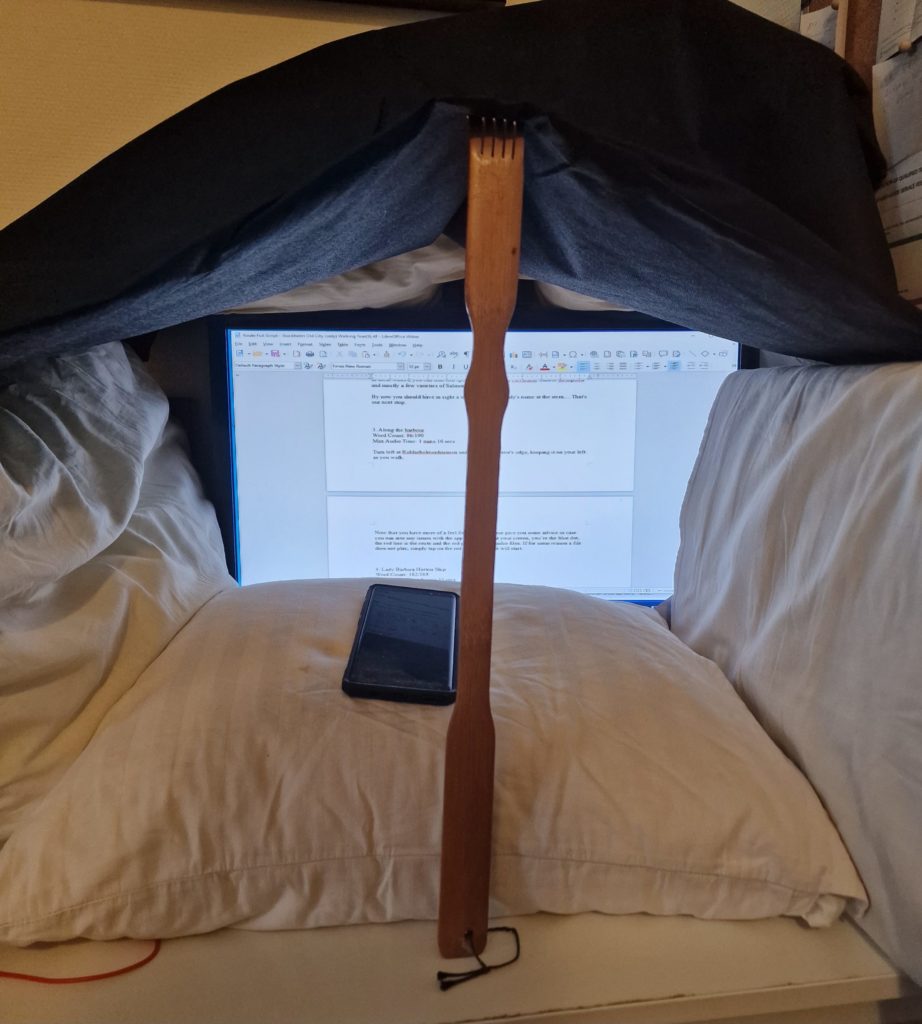If you’ve worked with audio before, you’ll know that seemingly imperceptible sounds can make it into the recording. Anything from a running tap next door to the hum of your fridge might be picked up, depending on the sensitivity of the microphone you’re using.
Choose a time of day when nobody’s bustling about and there’s no traffic.
The best place to record is a quiet, carpeted room with curtains. Tiles and walls bounce sound around, and they give a bit of an echo. You’ll also find that the quality is a little ‘cold’. There’s a simple solution for this – although you might feel a bit silly. Get a blanket and set it up between two chairs to create a little blanket fort, and record inside it. Not only will you feel like a kid again, but it will make a huge difference to the audio quality – your voice will sound more warm and natural, and there will be minimal reverb. Even famous actor Mark Ruffalo used the blanket fort method when he had some audio to record during the Covid-19 lockdown.

